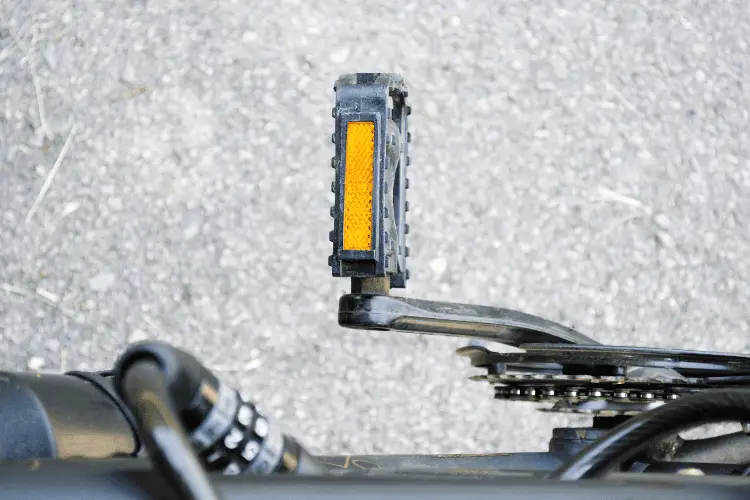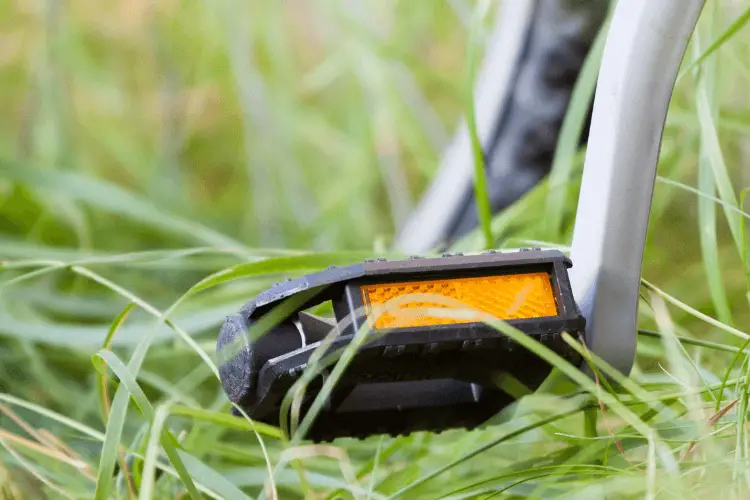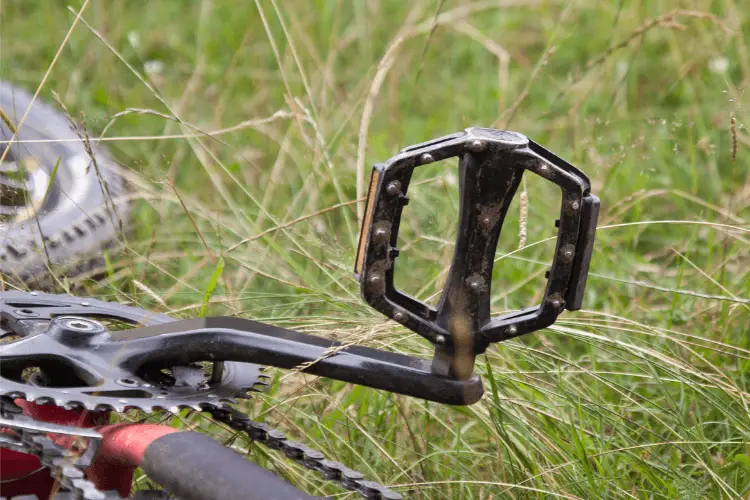The difference between ½ and 9/16 inch pedals is that the ½ inch pedals are used for cheap brands or kids’ bikes. The 9/16 inch pedals are used for mountain bikes and are the most commonly used pedals.
These two major bike pedals are the most used on bikes nowadays. For example, the ½-inch pedal is used for children and BMX bikes.
The 9/16-inch pedal is used for all modern adult mountain bikes. But when you see them, how do you differentiate them? And how do you know the best pedal for you?
In this article, we’ll look at the difference between these sizes of pedals and consider which is the standard pedal size.
Quick Navigation
What Is A ½-Inch Pedal?
The ½-inch pedal size is the second most commonly used pedal size in bikes today. This pedal size comes with 20 threads per inch. The inch measurement is for the pedal screw diameter, while the 20 is the number of threads on the shaft.

Popular bike brands do not use this pedal size. Instead, you will find them on cheaper brands.
You can also find this ½ -inch-thread pedal on adult road bikes, BMXs, and kids’ bikes.
Exclusively, they are used on American cranks or with one piece. They work perfectly when paired with flat pedals or kid’s platforms.
What Is A 9/16-Inch Pedal?
A 9/16-inch pedal is the most common thread size, with 20 threads per inch. They are also used on most newer mountain bike models and regular road bikes.
Based on its popularity, the 9/16-inch pedal is relatively inexpensive. The popularity of biking and mountain biking has necessitated an almost-standard pedal thread size, which 9/16-inch thread pedals solve.
If you’re getting an adult mountain bike, it comes with a 9/16-inch pedal. This pedal works best with hybrid, clipless off-road, or toe clip pedals.
Are 9/16-Inch Pedals Standard Size?
The 9/16-inch pedal is considered the standard size in pedals. That’s why they’re now the most commonly used pedal size.

9/16-inch pedals are near the standard in bike pedals, meaning most bikes can use them.
The reason why it’s an almost standard pedal size is that standard replacements are often necessary.
It would be a problem if people needed to search deeply for their pedal replacements every time they needed one.
Also, it would not make sense if all pedals were unique to their brands and models.
Hence why the creation of an almost standard pedal size became important.
½-inch Pedal vs 9/16-inch Pedal
Now that we have defined what each pedal size represents and where they’re mostly used, we will look at their differences and what makes them unique.
| ½-inch pedal | 9/16-inch pedal |
|---|---|
| Much less common than the 9/16 pedals | Most common pedal thread size |
| Bikes that use ½-inch pedal include kids bike, cheap adult cruiser bike, and BMX bikes | Almost all modern adult bikes have this pedal with 20 threads each |
| Not cheap due to the low demand | Among the least expensive ones on the market |
| Works best with kids’ platforms or flat pedals. | Works best with hybrid pedals, clipless off-road pedals, or toe clip pedals. |
How Do I Know If My Bike Pedals Are 9/16-Inch or ½-Inch?
The best way to know the size of your bike pedal thread is to measure the bike pedal thread. However, it might be confusing if you’re unfamiliar with the process.

To know if your pedal threads are ½ inch or 9/16 inch, you must determine the number of parts of the crank.
If there are two or more parts, the bike uses a 9/16 inch thread. If it’s only one crank, then the bike uses ½ inch pedal threads.
You can still measure the pedal thread after to confirm.
Here’s what you should do:
Dismantle the crankset
Take apart the crankset using a crank puller. Screw the crank puller into the crank arm. The rotating part will press against the bottom bracket spindle. This motion pushes the crank arm away from the spindle.
Count the Parts
If you successfully remove the crank arm, you should have a 3- piece crankset.
You should have a 2-piece crankset if one of the cranks is connected to a spindle. This 3 piece and 2 piece crankset both use 9/16-inch pedal thread.
If you cannot separate the crankset, confirm if it’s a single unit. If it is, you need a ½-inch pedal thread.
Measure Pedal Threads
You might find it overwhelming to measure the thread parts for the first time. Start by identifying the thread on the pedal.
Use a caliper to measure the distance between each thread. Convert your answer into inches.
This is the most accurate way to find the size of your pedal thread.
Is A 9/16-Inch Pedal Bigger Than ½-Inch?
Yes, the 9/16-inch pedal Is bigger than the ½- inch pedal. The reason for this conclusion is that the 9/16-inch pedal is mostly used on bigger bikes, while the ½-inch pedal is used on smaller bikes.

The pedal axle diameter is used to determine the pedal size. To get an accurate pedal diameter depends on the type of crankset you have.
Due to the number of crank pieces the 9/16-inch pedal has, the pedal diameter is bigger than the ½-inch pedal, which has a smaller pedal diameter due to its one piece crank.
Frequently Asked Questions (FAQs)
Conclusion
With all the information explained here, you can easily spot the difference between a ½-inch pedal and a 9/16-inch pedal.
However, to properly know which pedal is which, you should manually measure the pedal thread and convert it to inches to know.
This is because if you want to guess it by the type of bike, some bike makers use a hybrid of these pedals on a bike and thinking with type/brand can be wrong.
